Do you have a question about the Toshiba BDX2000KU and is the answer not in the manual?
Section for recording model and serial numbers for dealer communication.
Reduce risk of fire or electric shock by avoiding rain or moisture.
Key instructions for safe operation, installation, and maintenance.
Details on radio frequency energy, interference, and compliance.
Safety measures for laser use, unit placement, and dew condensation.
Details on disc packaging recycling and progressive scan output.
Lists included accessories and symbols used throughout the manual.
Lists trademarks and logos associated with the product and its technologies.
Explains Blu-ray, BD-Java, BD-Live, and high-definition playback.
Details on playing various media types and connecting via HDMI.
Covers HDMI capabilities, Deep Color, CEC, and copyright protection systems.
Explains the function of each button on the front panel.
Describes the LAN terminal and HDMI OUT jack for network and video connection.
Details the composite and component audio/video outputs.
Describes buttons for playback control, menu navigation, and selection.
Explains buttons for setup, repeat, and special playback modes.
Step-by-step guide on opening, inserting, and closing the battery compartment.
Specifies the effective range and angles for remote control operation.
Describes icons indicating playback progress and modes.
Shows sample messages displayed during operation and loading.
Connects via HDMI for up to 1080p resolution and high-quality audio.
Connects via component video and composite audio for up to 1080i resolution.
Connects via composite video and audio for 480i resolution.
Illustrates the HDMI cable connection for video and audio.
Shows how to connect component video and standard audio cables.
Illustrates the composite video and audio cable connections.
Instructions for connecting via analog stereo or digital audio optical/coaxial.
Details how to connect audio via HDMI to an AV receiver or amplifier.
Diagram showing how to connect the unit to a modem, router, or hub.
Important notes regarding LAN cable connection and network setup.
Guides on turning on the unit and TV, and using the TV remote for input selection.
Lists supported disc types (BD, DVD, CD) and file formats.
Specific information for using SD memory cards, including supported formats.
Lists discs and file formats that the player cannot play.
Information on disc color systems and region code restrictions.
How disc contents are organized and how to view playback info.
Displays current chapter/title numbers, total count, and elapsed time.
Shows track/file numbers, elapsed time, and disc status.
Displays file names, media icons, and tag info like artist/title.
Instructions for opening the tray, placing the disc, and closing the tray.
Guide to inserting SD cards and selecting media type for playback.
Steps to access and navigate the "Media Select" menu.
Steps to play, pause, resume, and stop playback of discs.
Explains the feature that allows playback to resume from the stop point.
How to use the title menu for BD, DVD, and AVCHD discs.
How to access and use pop-up menus during BD-video playback.
How to select tracks, folders, or files from audio CDs and data discs.
Guides for navigating file lists and pages.
Explains the Kodak Picture CD menu and file information display.
Steps to select files and stop playback.
How to rotate images and change visual effects during playback.
Instructions for speeding up or slowing down playback.
How to achieve slow motion playback by pausing and using fast forward.
How to play back frame-by-frame and set repeat modes (chapter, title, track, group, all).
How to set a specific playback section or create a custom playback order.
Steps to activate random playback and exit the mode.
How to enable rapid playback and adjust black level for picture quality.
How to enable virtual surround for a more immersive audio experience.
Using PIP and changing camera angles for compatible discs.
Steps to connect to the internet and use BD-Live functions.
How to use SKIP buttons for basic track or title searching.
How to use the SEARCH button for title, chapter, track, and time searches.
Guide to selecting primary, secondary, or subtitle style.
How to switch between different audio streams and channels.
Explains "Mix Audio Output" and "HD Audio Output" settings.
Pressing the SETUP button to enter the menu.
How to use the Quick menu for frequently used settings.
Navigating to Language, Video, Audio, Parental, and Others sections.
Procedures for changing settings based on whether an icon appears.
Setting preferred languages for audio tracks and subtitles.
Setting languages for disc menus and the player's on-screen display.
Setting the picture size and HDMI video resolution for the connected TV.
Configuring Deep Color output and video resolution for component output.
Selecting the optimal progressive mode for video output.
Setting options (Auto, Field, Frame) for picture stabilization in still mode.
Setting BD audio modes and output formats for HDMI.
Adjusting digital audio down sampling and dynamic range control.
Mapping of device compatibility to specific HDMI audio output signals.
Table detailing bitstream and LPCM output based on BD Audio Mode.
Setting speaker sizes (Large/Small) for front, center, surround speakers.
Using test tone and resetting speaker settings to default.
Setting speaker volumes using test tone or auto calibration.
Configuring delay times based on speaker distance for audio synchronization.
Setting rating levels for BD and DVD content.
How to set or change the parental control password.
Settings for displaying angle icons and enabling auto power off.
Adjusting front panel brightness and enabling HDMI CEC control.
Selecting media source and initial network connection setup.
Limiting internet access for BD-Live and disabling network connections.
Updating unit firmware and enabling HDMI CEC for device control.
Features for one-touch TV channel switching and system language settings.
Performing a network connection test to verify settings.
Setting up network connection using Easy or Custom modes.
Setting up IP address, subnet mask, gateway, and DNS servers.
Configuring proxy server address and port for internet access.
Entering proxy address and port number for internet connectivity.
Selecting the appropriate connection speed for the network environment.
Limiting internet access for BD-Live and disabling network functions.
Checking current version and updating firmware via disc.
Resetting setup menu, parental controls, and network settings.
Formatting SD cards and erasing saved BD-ROM data.
Addressing issues with power, sound output, and picture distortion.
Resolving problems with disc playback, SD card reading, and remote control.
Troubleshooting unit freezing, button response, and playback errors.
Resolving problems with connecting to the network or using BD-Live.
Addressing issues with BD-video playback and SD card usage.
Definitions for Analog Audio, Aspect Ratio, AVCHD, BD-Java, BD-Live, etc.
Definitions for DNS Server, Dolby Digital, DTS, HDMI, JPEG, LAN, etc.
Definitions for Local Storage, MP3, PCM, and Windows Media Audio.
Definitions for Proxy Server, Region Code, Router, Sampling Frequency, x.v.Color.
List of language names and their corresponding codes for manual lookup.
Electrical, physical, and environmental specifications of the player.
Details on video, audio, and network output/input terminals.
Guidelines for cleaning the cabinet, discs, and disc lens.
Proper disc handling and how to test the remote control's IR signal.
Explains the limited warranty period, exchange policy, and exclusions.
Instructions on how to contact TACP for warranty service and claims.
Details on software components and their distribution under third-party licenses.
Details regarding verbatim copies, modifications, and distribution rights under GPL.
Guidelines for linking, modifying, and distributing works based on LGPL libraries.
Details on warranty, redistribution, and usage of the FreeType Project software.
Conditions for using, copying, and distributing the Independent JPEG Group software.
Section for recording model and serial numbers for dealer communication.
Reduce risk of fire or electric shock by avoiding rain or moisture.
Key instructions for safe operation, installation, and maintenance.
Details on radio frequency energy, interference, and compliance.
Safety measures for laser use, unit placement, and dew condensation.
Details on disc packaging recycling and progressive scan output.
Lists included accessories and symbols used throughout the manual.
Lists trademarks and logos associated with the product and its technologies.
Explains Blu-ray, BD-Java, BD-Live, and high-definition playback.
Details on playing various media types and connecting via HDMI.
Covers HDMI capabilities, Deep Color, CEC, and copyright protection systems.
Explains the function of each button on the front panel.
Describes the LAN terminal and HDMI OUT jack for network and video connection.
Details the composite and component audio/video outputs.
Describes buttons for playback control, menu navigation, and selection.
Explains buttons for setup, repeat, and special playback modes.
Step-by-step guide on opening, inserting, and closing the battery compartment.
Specifies the effective range and angles for remote control operation.
Describes icons indicating playback progress and modes.
Shows sample messages displayed during operation and loading.
Connects via HDMI for up to 1080p resolution and high-quality audio.
Connects via component video and composite audio for up to 1080i resolution.
Connects via composite video and audio for 480i resolution.
Illustrates the HDMI cable connection for video and audio.
Shows how to connect component video and standard audio cables.
Illustrates the composite video and audio cable connections.
Instructions for connecting via analog stereo or digital audio optical/coaxial.
Details how to connect audio via HDMI to an AV receiver or amplifier.
Diagram showing how to connect the unit to a modem, router, or hub.
Important notes regarding LAN cable connection and network setup.
Guides on turning on the unit and TV, and using the TV remote for input selection.
Lists supported disc types (BD, DVD, CD) and file formats.
Specific information for using SD memory cards, including supported formats.
Lists discs and file formats that the player cannot play.
Information on disc color systems and region code restrictions.
How disc contents are organized and how to view playback info.
Displays current chapter/title numbers, total count, and elapsed time.
Shows track/file numbers, elapsed time, and disc status.
Displays file names, media icons, and tag info like artist/title.
Instructions for opening the tray, placing the disc, and closing the tray.
Guide to inserting SD cards and selecting media type for playback.
Steps to access and navigate the "Media Select" menu.
Steps to play, pause, resume, and stop playback of discs.
Explains the feature that allows playback to resume from the stop point.
How to use the title menu for BD, DVD, and AVCHD discs.
How to access and use pop-up menus during BD-video playback.
How to select tracks, folders, or files from audio CDs and data discs.
Guides for navigating file lists and pages.
Explains the Kodak Picture CD menu and file information display.
Steps to select files and stop playback.
How to rotate images and change visual effects during playback.
Instructions for speeding up or slowing down playback.
How to achieve slow motion playback by pausing and using fast forward.
How to play back frame-by-frame and set repeat modes (chapter, title, track, group, all).
How to set a specific playback section or create a custom playback order.
Steps to activate random playback and exit the mode.
How to enable rapid playback and adjust black level for picture quality.
How to enable virtual surround for a more immersive audio experience.
Using PIP and changing camera angles for compatible discs.
Steps to connect to the internet and use BD-Live functions.
How to use SKIP buttons for basic track or title searching.
How to use the SEARCH button for title, chapter, track, and time searches.
Guide to selecting primary, secondary, or subtitle style.
How to switch between different audio streams and channels.
Explains "Mix Audio Output" and "HD Audio Output" settings.
Pressing the SETUP button to enter the menu.
How to use the Quick menu for frequently used settings.
Navigating to Language, Video, Audio, Parental, and Others sections.
Procedures for changing settings based on whether an icon appears.
Setting preferred languages for audio tracks and subtitles.
Setting languages for disc menus and the player's on-screen display.
Setting the picture size and HDMI video resolution for the connected TV.
Configuring Deep Color output and video resolution for component output.
Selecting the optimal progressive mode for video output.
Setting options (Auto, Field, Frame) for picture stabilization in still mode.
Setting BD audio modes and output formats for HDMI.
Adjusting digital audio down sampling and dynamic range control.
Mapping of device compatibility to specific HDMI audio output signals.
Table detailing bitstream and LPCM output based on BD Audio Mode.
Setting speaker sizes (Large/Small) for front, center, surround speakers.
Using test tone and resetting speaker settings to default.
Setting speaker volumes using test tone or auto calibration.
Configuring delay times based on speaker distance for audio synchronization.
Setting rating levels for BD and DVD content.
How to set or change the parental control password.
Settings for displaying angle icons and enabling auto power off.
Adjusting front panel brightness and enabling HDMI CEC control.
Selecting media source and initial network connection setup.
Limiting internet access for BD-Live and disabling network connections.
Updating unit firmware and enabling HDMI CEC for device control.
Features for one-touch TV channel switching and system language settings.
Performing a network connection test to verify settings.
Setting up network connection using Easy or Custom modes.
Setting up IP address, subnet mask, gateway, and DNS servers.
Configuring proxy server address and port for internet access.
Entering proxy address and port number for internet connectivity.
Selecting the appropriate connection speed for the network environment.
Limiting internet access for BD-Live and disabling network functions.
Checking current version and updating firmware via disc.
Resetting setup menu, parental controls, and network settings.
Formatting SD cards and erasing saved BD-ROM data.
Addressing issues with power, sound output, and picture distortion.
Resolving problems with disc playback, SD card reading, and remote control.
Troubleshooting unit freezing, button response, and playback errors.
Resolving problems with connecting to the network or using BD-Live.
Addressing issues with BD-video playback and SD card usage.
Definitions for Analog Audio, Aspect Ratio, AVCHD, BD-Java, BD-Live, etc.
Definitions for DNS Server, Dolby Digital, DTS, HDMI, JPEG, LAN, etc.
Definitions for Local Storage, MP3, PCM, and Windows Media Audio.
Definitions for Proxy Server, Region Code, Router, Sampling Frequency, x.v.Color.
List of language names and their corresponding codes for manual lookup.
Electrical, physical, and environmental specifications of the player.
Details on video, audio, and network output/input terminals.
Guidelines for cleaning the cabinet, discs, and disc lens.
Proper disc handling and how to test the remote control's IR signal.
Explains the limited warranty period, exchange policy, and exclusions.
Instructions on how to contact TACP for warranty service and claims.
Details on software components and their distribution under third-party licenses.
Details regarding verbatim copies, modifications, and distribution rights under GPL.
Guidelines for linking, modifying, and distributing works based on LGPL libraries.
Details on warranty, redistribution, and usage of the FreeType Project software.
Conditions for using, copying, and distributing the Independent JPEG Group software.
| Brand | Toshiba |
|---|---|
| Model | BDX2000KU |
| Category | Blu-ray Player |
| Language | English |

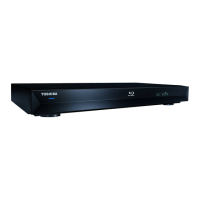
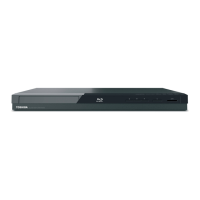
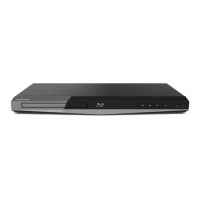
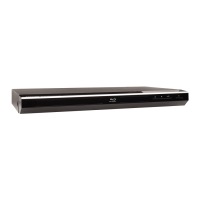


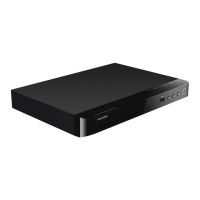

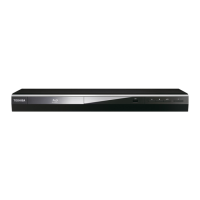
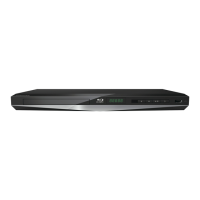
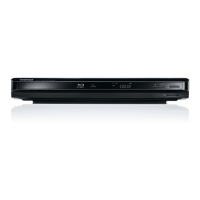
